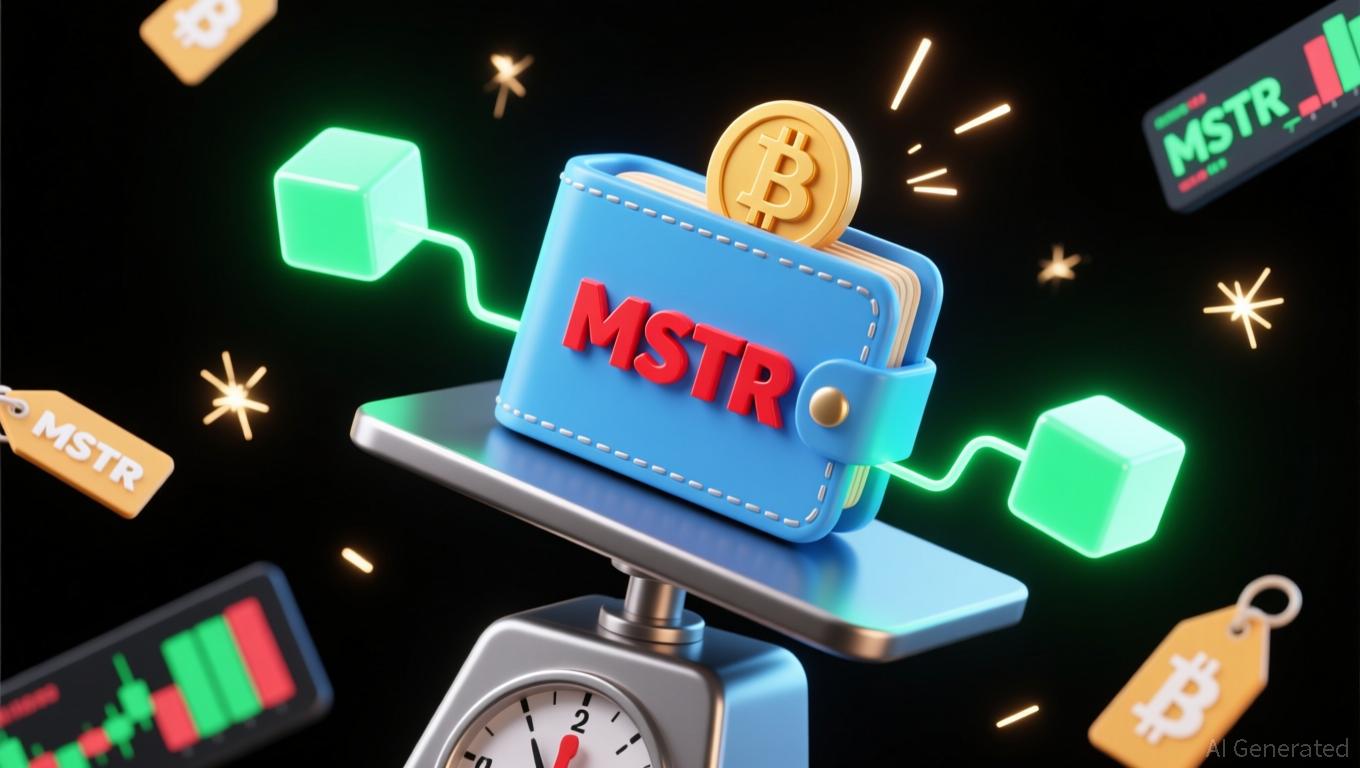Bitcoin Leverage Liquidation Spike: A Warning Story on Heightened Risks in Derivatives Trading
- 2025's crypto derivatives market saw $17B in Bitcoin liquidations on October 10, driven by leveraged positions collapsing amid a 18.26% price drop. - November 2025 saw $2B+ daily liquidations as bearish sentiment intensified, with Bybit/Hyperliquid accounting for 50% of losses and long positions dominating. - Bybit and Binance faced leverage contraction post-crash, with open interest halving on Bybit and 30% declines at Binance, revealing structural fragility. - Rising USD and Treasury yields compounded
A Historic Liquidation: October 2025 and the $17 Billion Shock
One of the most dramatic examples of risk magnification occurred on October 10, 2025, when a single day of liquidations wiped out $17 billion in notional value from Bitcoin futures.
November 2025: Renewed Liquidations and Growing Bearishness
November brought no relief from volatility. When Bitcoin slipped below $85,000, derivatives liquidations soared past $2 billion in a single day, with Bybit and Hyperliquid responsible for more than half of the total losses.
The selloff was made worse by unprecedented outflows from U.S. spot Bitcoin ETFs, which shed over $3 billion in November.
Exchange-Specific Trends: Bybit, Binance, and the Leverage Balancing Act
Understanding risk escalation requires a close look at Bybit and Binance.
The inverted implied volatility curve for Bitcoin and
Crucial Price Zones and Macro Headwinds: Walking a Tightrope
Bitcoin's movements in November 2025 have clarified key support and resistance points. Bulls need to reclaim $85,000 to ease liquidation risks and discourage shorts from targeting perpetuals.
Wider economic factors add complexity. A strengthening U.S. dollar and rising 10-year Treasury yields have increased risk aversion, making it harder for Bitcoin to recover. These pressures, combined with the inherent instability of leveraged trades, mean that even small price moves could trigger more liquidations.
Conclusion: Adapting to the Evolving Derivatives Landscape
The wave of Bitcoin leverage liquidations in 2025 reflects deeper structural weaknesses rather than isolated incidents. As derivatives markets expand and become more intricate, risk amplification is becoming unavoidable. For market participants, the takeaway is unmistakable: trading with leverage in a volatile Bitcoin environment requires not only caution but a reassessment of risk appetite. The ongoing interaction between trader sentiment, exchange behavior, and macroeconomic trends will keep shaping the market, making thorough research and risk management strategies indispensable. In this shifting landscape, adaptability is key—and recognizing that leverage, while tempting, can quickly turn into a major risk is crucial for survival.
Disclaimer: The content of this article solely reflects the author's opinion and does not represent the platform in any capacity. This article is not intended to serve as a reference for making investment decisions.
You may also like
BAT Offsets Zimbabwe Declines with Increased Nigerian Exports and Reduced Expenses
- British American Tobacco (BAT) shares rose 10% amid regional performance divergence and cost-cutting, despite Zimbabwe's 7% cigarette consumption decline. - Zimbabwe operations saw 22% revenue drop but turned $3M loss into $11M profit via cost discipline, while Nigeria's $300M export sales earned industry recognition. - BAT's dual strategy of cost optimization in shrinking markets and export-driven growth in high-growth regions boosted investor confidence and operational resilience. - Nigerian exports su

Bitcoin Updates: MSCI's Uncertainty in Classifying Bitcoin Puts MSTR's $59 Billion Worth at Risk
- MSCI's proposed exclusion of MSTR from major indices could trigger $2.8B in outflows, destabilizing its leveraged Bitcoin model. - JPMorgan warns the move reflects a debate over classifying Bitcoin-holding firms as investment vehicles, not operating businesses. - MSTR's stock has fallen 60% since November 2024, with its NAV multiple collapsing to 1.1 as Bitcoin prices drop 30%. - Saylor continues aggressive Bitcoin buying ($1.5B in November) via equity/dilutive debt, straining investor confidence and pus

ZK Atlas Upgrade: Ushering in a New Generation of Blockchain Scalability and DeFi Growth
- ZKsync's Atlas Upgrade (Oct 2025) achieves 15,000 TPS with sub-1-second finality and near-zero fees, addressing blockchain scalability trilemma. - Integrating Airbender proof system and ZKsync OS reduces proof costs to $0.0001/tx, enabling microtransactions and EVM compatibility while slashing bridge reliance. - DeFi benefits from ZKsync Gateway's trustless cross-chain interoperability, breaking liquidity silos and boosting market efficiency as TVL in ZK networks hits $3.5B. - Institutional adoption (Deu
Why ZK is Gaining Momentum in Late 2025: Growth in ZK Infrastructure and Increased Developer Engagement Driving Token Value
- Zero-Knowledge (ZK) technology's 2025 surge reflects structural adoption driven by infrastructure upgrades, developer tools, and institutional partnerships. - ZKsync and StarkNet achieved 15,000 TPS and $3.3B TVL, with Goldman Sachs , Deutsche Bank , and Sony integrating ZK for compliance and scalability. - Developer activity rose 230% via tools like solx Compiler, while ZK-rollups now handle 83% of enterprise smart contracts and $500M+ token valuations. - Institutional validation through MiCA-compliant